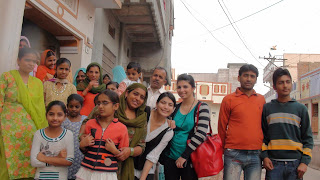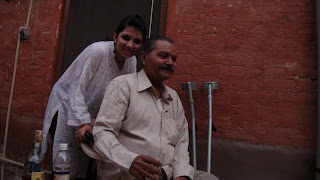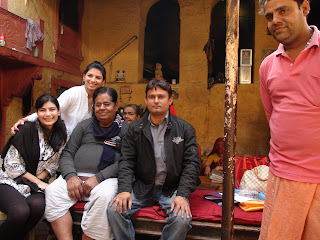Why a Paanwala??? Harshlata’s curiosity compelled me to explain that this wasn’t an ordinary Paanwala. His unique attire and the display of gold jewellery on his body made him a little different from all other Paanwalas in town and reminded me of an era long gone. While the Paans at his shop are as famous as his shining personality yet tourists visit his shop only to get a glimpse of Moolsa Phoolsa.
A night before going to the Paan shop I was rehearsing my dialogues with Harshlata. The questionnaire I had prepared for him was extremely boring but having heard of him so much, I was only inquisitive to see what he looked like. I was also scared if he would acknowledge my presence or if he would hand over a Paan to me and say run along because I was told by the locals that he has an intimidating personality. In spite of all that drama I created in my mind I was pleasantly surprised to see how kind Moolsa Phoolsa was and how stupid was I to have thought he wouldn’t give my documentary any importance.
It was a bright and sunny morning; Harshu and I were all geared up to meet this famous Panwala. Navendu Ji (our guide) on the other hand was making us nervous by constantly telling us about Moolsa Phoolsa’s mood swings. However, we managed to give a deaf ear to all that and surfed our way through the morning madness to land safely at the pan shop. And there in front of us was this interesting man who somewhat reminded me of south Indian pandits (priests). Although he wasn’t wearing his famous turban that day yet the gold jewellery was enough to make my story fascinating.
Located near Kot Gate, in some corner of a crowded market was his tiny shop that had a beautiful painting of shri naath ji (lord Krishna) who inspires Moolsa Phoolsa to wear 1Kilo of gold on his body. Shri naath ji is a form of lord Krishna, depicted as a seven year old child, who is decorated with artistic jewellery made of gold, diamond and other stones. This Paan shop has been running successfully since 1960 and in a small town like Bikaner, he runs this show for 22hrs every day. This place thrives at mid-night!!
The most famous Paan in this shop is Madras Paan, and so I requested Moolsa Phoolsa to make one for me. He took a Paan ka Patta (betel leaf) in his hand and started putting various ingredients such as coconut, fruit preserves, rose petal preserves (Gulkand), betel nuts and other spices. In the next step he folded the leaf in a conical shape and handed over the juicy Paan in my hand. It was deadly, delicious and a Paan worth dying for (without any exaggeration). It wasn’t just a palate cleanser or a breath freshener; it was a complete treat for my taste buds and the juice was literally dripping outside my mouth. That’s how much I enjoyed Madras Paan.
Before leaving the shop Harshlata and I got five Paans packed, which magically disappeared before sunset. It was a wonderful experience and I couldn’t stop thanking Moolsa Phoolsa for letting me take his interview. His exceptionally smart marketing strategy has made his shop the most successful Paan shop in Bikaner. The people of this city have a very humble approach towards life, which can make anyone fall in love with Bikaner. But along with that they also know how to come up with unusual ideas to attract the visitors who come to Bikaner to find something they have never experienced before.




















